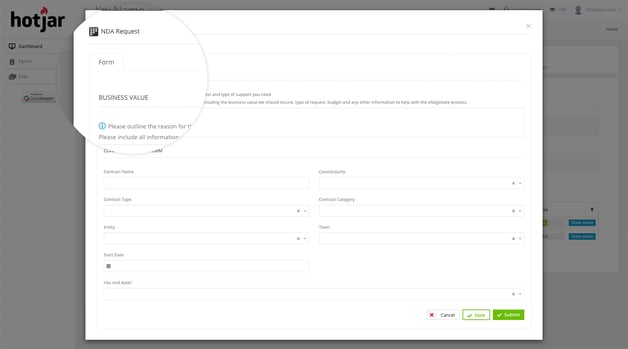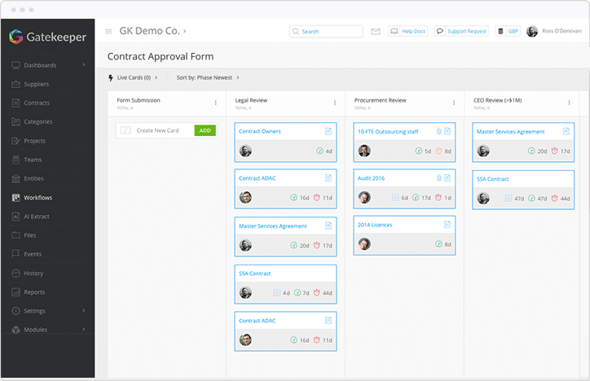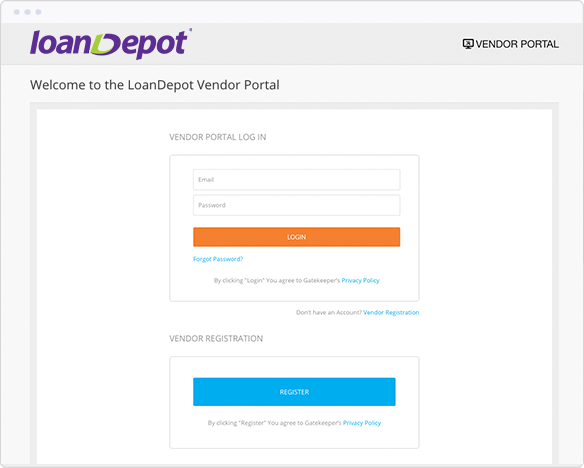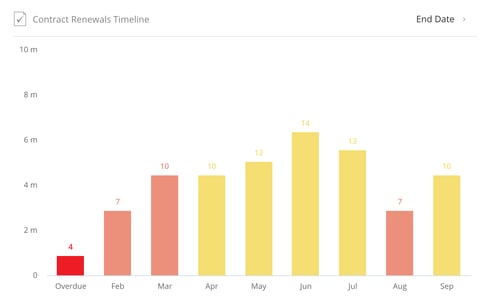How do you know if your business needs a contract management system?
The answer is simple - every business needs a contract management tool of some kind.
Contracts are the foundation blocks of all business. They store key commercial and risk information and need to be managed as effectively as resources allow.
The contract management system required could be as simple as a filing cabinet or a central spreadsheet for collating contract information and a shared drive where the contract documents are stored.
These options can be sufficient for businesses of a certain size or with very simple requirements. And better yet, they’re near enough free. All it costs is the price of a filing cabinet or a Microsoft Office license.
However, the reality for growing businesses is that these simple ‘systems’ quickly become unsuitable.
You wouldn’t expect global companies like Apple or Nike to manage their contracts using a filing cabinet.
So that means that as businesses scale, somewhere between small businesses and companies the size of Apple, it becomes appropriate to upgrade the system used to manage contracts to a specialist contract management software.
So how can you identify whether your business is at that stage and whether a dedicated software solution could help your business?
We’ve come up with some simple self-diagnosis questions, based on what customers who buy Gatekeeper tell us. These questions are linked to three common business problems that we solve for those customers.
So read on and decide whether any of the following problems and symptoms sound familiar.
Problem 1. Contract and Vendor Data Fragmentation
Contract documents and vendor relationships contain and generate significant amounts of information and data.
It’s vital to be able to track the data-points held within the individual contract documents, the aggregated metadata across all contracts and the auditable history of activity against each record.
In order to do this effectively, data must be easily accessible, comprehensive and consistent.
Data fragmentation is the nemesis of this organised and efficient state.
So, how do you know if your business is suffering from data fragmentation?
Diagnosis
Are you experiencing the following symptoms?
- You’re unsure how many live contracts your business has and the value of them.
- You have multiple sources of partial information about your business’s contracts, eg. Shared Drives, Excel Spreadsheets, Sharepoint and individual email accounts but no single view of everything.
- The contracts that you have stored are in multiple formats, including hard and soft copies, scans and PDFs.
- You lack insight into how individual contracts relate to other contracts in the business.
- Team members (often including highly paid legal ones) spend significant time looking internally for specific contract information.
- You have frequent, lengthy back-and-forth communication with third-parties to gain required information.
- You stress about the prospect of being audited for contractual and third-party compliance.
- Your business has multiple, overlapping contracts signed with the same organisation.
- There’s a general lack of standardised processes across the business for managing contracts
Solution
A high-functioning contract management team should be able, at a moment’s notice, to:
- Find a specific contract document and retrieve a required piece of information or clause language from it.
- Pull a report of all contracts or vendors matching requested criteria, such as “contracts valued at over $1m, owned by the IT department and renewing in the next three months”.
- Review a timeline of activity against a contract or vendor to establish what was communicated and when.
So, how can this be achieved?
Step 1 - Build your Contract Repository - the single source of truth
At the centre of Gatekeeper’s solution is a dynamic contract repository - a complete record of all your contract and vendor agreements, which is constantly updating with the latest activity.
It’s purpose-built for managing contracts across businesses of all sizes and solves the issue of data fragmentation by:
- Making it easy to upload contracts and automatically extract key metadata to build comprehensive records.
- Turning that data into accessible, aggregate dashboards and reports.
- Utilising access controls to maintain data integrity and confidentiality.
- Making it possible to search across contract records and within contract documents from a single place.
.png?width=598&name=Executive%20(1).png) Gatekeeper's Executive Dashboard
Gatekeeper's Executive Dashboard
Step 2 - Implement smart intake forms
With your repository in place, the next thing you want to do is ensure that all future requests and interactions are standardised and reach the level of detail you require.
The way to do this is to tightly control how information gets submitted to you.
No more emails being sent directly to someone in Legal (“Can you just take a look at this?”).
From now on you use public forms or a dedicated portal and mandate the fields of information that need to be included. No exceptions.
This will ensure that your legal or contract team doesn’t need to spend their time chasing up stakeholders to get more information from them and can speed up your overall time to execute or review contract documents.
What’s more, if you mandate that internal or external stakeholders must supply compliance certifications along with their submissions, then again you’re saving the internal team the task of finding these and maintaining them.
For certifications that require periodic renewal, automated tasks can be set up to provide timely reminders and for them to be sent directly to the appropriate vendors.
 A branded intake form - in this case for NDA requests
A branded intake form - in this case for NDA requests
Step 3 - Make it easy to reassign ownership
One of the main ways that contract data becomes fragmented is through a lack of clear ownership and accountability. If you have contracts sitting in a shared drive, over time it can become unclear who owns them, especially if staff leave the business.
Awareness and understanding can be lost and that’s when you start to see duplicate agreements, unmanaged renewals and wasted spend.
In Gatekeeper, contracts are assigned ownership and it’s easy for users to quickly filter to their own dashboard of agreements. What’s more, should they leave the business, reallocation can be easily carried out by admins, to ensure continuity of management.
Problem 2. Reliance on Manual Contract Processes
As businesses scale, manual processes mean bottlenecks and delays. What works at small scale, starts to become unwieldy before eventually becoming expensive and unmanageable.
This is true for contract management processes as much as any other type of manual process.
Diagnosis
Are you experiencing the following symptoms?
- A lack of consistency when it comes to getting contracts executed, with considerable variance in the amount of time taken.
- One person who represents a possible “single point of failure” for your contract processes because they hold too much information either in their head or a spreadsheet or similar.
- Internal stakeholders regularly circumvent the desired process because they “have an urgent request”.
- Those same stakeholders then further interrupting your team in search of updates.
Solution
Embrace the power of automation to reduce your business’s reliance on manual work and to give it a solid platform for future growth.
Whether it’s self-service contract generation for simple documents such as NDAs or complex, multi-level approval processes, solutions like Gatekeeper offer the ability to manage a greater workload without necessarily having to scale headcount.
Step 1 - Define your processes & build them into an automation engine
Map out your workflow processes and replicate them within Gatekeeper’s Visual Kanban Workflow Builder.
Gatekeeper’s solution uses the principles of Kanban to give you an immediate view of where all of your contracts are within your processes.
The workflows then manage contracts through the designated steps automatically, which dramatically cuts the amount of administrative overhead required from your internal teams.
Through careful configuration, these workflows will ensure that all necessary steps are completed. In the case of new requests, this would include data submission, departmental reviews, negotiation and execution.
Key dates and obligations can also be captured to initiate further actions at the right times.
Workflows run 24/7 and can be set up with service level agreements (SLAs) so that any steps that aren’t completed within the designated timeframes are then escalated to the relevant party. This ensures that momentum is maintained and the time to complete contract processes is minimised.
 Gatekeeper's Kanban Workflow Engine in action
Gatekeeper's Kanban Workflow Engine in action
Step 2 - Standardise the request process
Implement one or both of Gatekeeper’s portals to delegate access and responsibility securely to relevant parties.
Gatekeeper’s Vendor Portal and Employee Portal are designed to fit seamlessly with the workflow engine and can be used by external and internal stakeholders to initiate contract processes.
By standardising and delegating the intake process, the need for manual intervention by your central team is minimised.
What’s more, the portals provide ongoing access to stakeholders where they’re able to log in and check on the progress of their submissions, thereby saving the central team from interruption.
 A branded version of Gatekeeper's Vendor Portal
A branded version of Gatekeeper's Vendor Portal
Step 3 - Secure access
Implement secure access control and permissions across the business to improve visibility and awareness of contracting processes.
Contracting is inherently collaborative and Gatekeeper facilitates this with its cloud deployment and highly-configurable access controls.
Users can be granted appropriate permission to access relevant contract records based on team permissions or at a specific individual level.
This empowers stakeholders to take more ownership over the contracts relating to their areas and not to just simply rely on Legal or Procurement to take care of the arrangements for them.
Generally, this increased access to, and awareness of, contracts across a business helps to embed processes more effectively and leads to more proactive engagement.
Problem 3. Less-Than-Perfect Renewal Management
Renewals are pivotal moments for business relationships. Managed correctly, they provide opportunities for both parties to objectively assess the relative merits of the agreement, measure delivery against targets and, if necessary, take remedial action including termination or renegotiation.
However, they also present significant risk if not managed effectively. Potential outcomes include unnecessary expenditure, loss of supply, poor vendor relations and even legal action.
Diagnosis
Are you experiencing the following symptoms?
- You have no consistent view of forthcoming renewals.
- Existing contracts auto-renew without your team being aware, incurring unnecessary costs.
- Having been notified of an imminent renewal, your team is obliged to assess the performance and delivery of that contract and third-party in a truncated time period, meaning details can be missed and alternatives can’t be properly reviewed.
- Key dates recorded in relation to contracts don’t necessarily correspond to notice periods or required review periods.
- Your business engages with multiple vendors supplying the same or very similar services.
Solution
Get out ahead of every renewal and give stakeholders the means to appraise every contract prior to its ending or auto-renewal.
Create efficient, timely processes that minimise interruption but provide sufficient opportunity for informed decision making.
 An example renewals timeline from the Gatekeeper Dashboard
An example renewals timeline from the Gatekeeper Dashboard
Step 1 - Dates, Dates, Dates
Capture the key dates for every contract, no exceptions.
“Key dates” may mean different things to different people but here are three that should be recorded against each record:
- “End date” or “Valid Until Date”. The date upon which the contract will expire.
- Renewal Date. The date by which a decision to renew or not must be taken. Generally calculated by subtracting the renewal period from the contract end date (eg. 30 days).
- Review Date. The date that an internal review of the contract’s performance should commence, in order that it can be completed prior to the renewal date to inform the renewal decision.
It’s possible that none of these three dates will be listed explicitly in the contract. For instance a contract may reference the fact that it’s “valid for 12 months from the date of execution”, meaning all the key dates will need to be calculated.
A combination of AI tools and human review will be vital here to ensure the correct data can be captured. As we’ve highlighted already, this needn’t fall on the legal team to complete as it can be delegated to those requesting the contract to extract the relevant information.
Step 2 - What does a 'good' renewal look like?
Define what the desired renewal process should look like at each of the key dates above.
Don’t leave it up to individual teams to decide how they review contracts and make decisions about renewals. Start with a prescribed series of steps and templates that can be used to standardise the approach to contract review.
So for example, at the review date, an internal stakeholder might be obliged to complete a balanced scorecard assessment of the vendor along with analysis of whether what was agreed at the start of the contract has been delivered and whether superior alternatives now exist in the market.
These combined outputs may then be required to be submitted to an internal approval party along with a recommendation to renew or not for final sign-off.
It’s vital also to specify SLAs to make sure that the necessary steps are completed before the next deadline.
Once these processes are documented, they can ideally be built into Gatekeeper for automation.
Step 3 - Automate for peace of mind
Automate reminders on the key dates to the relevant stakeholders, requesting that they take a specific action.
This is one of the fundamental building blocks for effective contract management. Proactive management of renewals means:
- Contract expenditure is reviewed periodically and can be controlled either through termination of unwanted agreements or renegotiation, based on delivery and latest market rates.
- Better relationships with suppliers as a result of open communication.
- Fewer nasty surprises.
Final Thoughts
Gatekeeper works with a huge variety of organisations across different industries and locations. What’s more, within those businesses, we engage with a number of different teams to deliver the benefits of contract management as widely as possible.
However, despite these variances, the three problems outlined above are by far the most common that prospective customers are experiencing.
As we said at the start, there’s no consistent, identifiable point in a business’s development where investing in a contract management system is mandated so it’s up to the key individuals within a business to decide when the time is right.
Assessing the symptoms described above can help you to decide if your business is ready to take this step.
To talk to us about how Gatekeeper can help you to organise your business’s contracts and associated processes, book a short demo today.

.png)
.png)
.png)
-4.png)